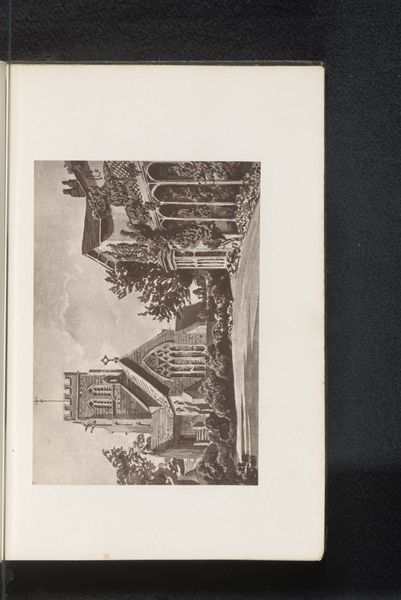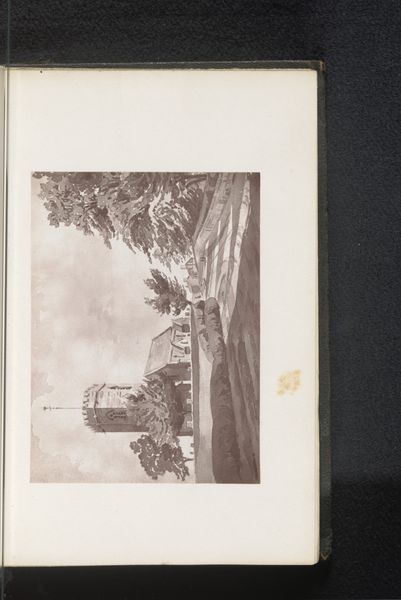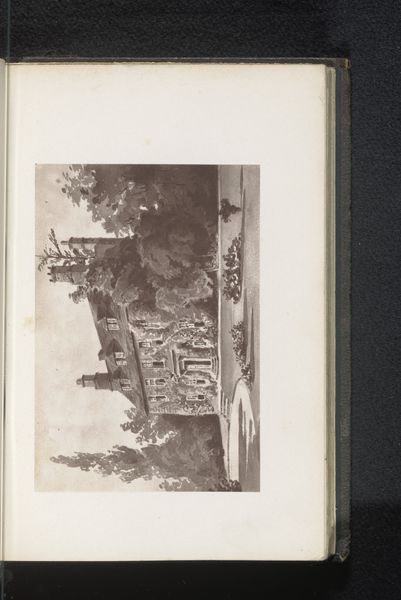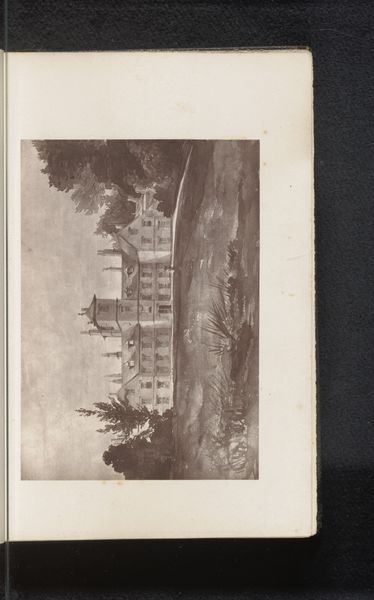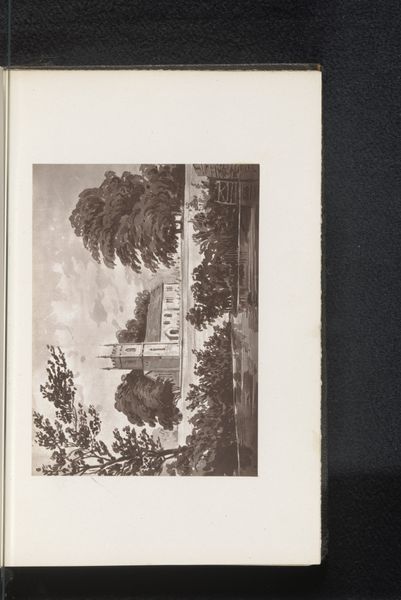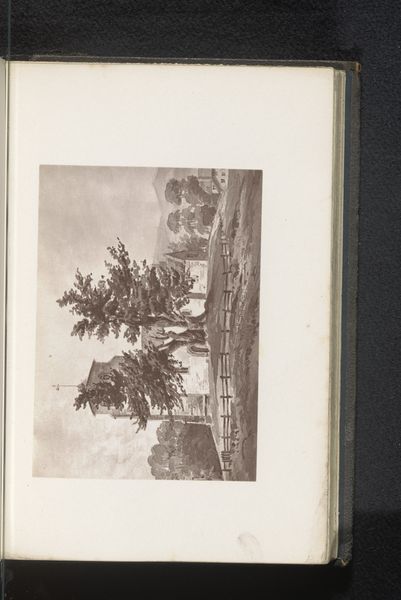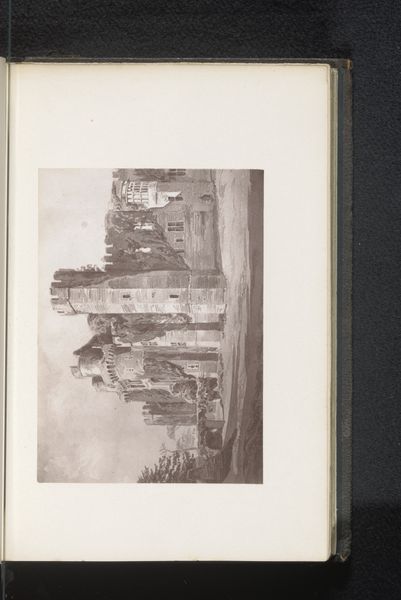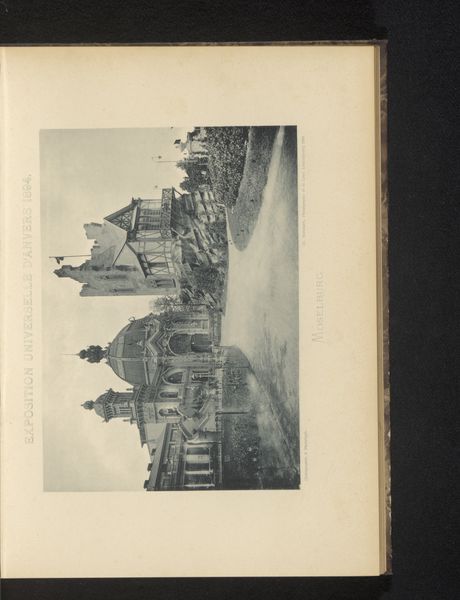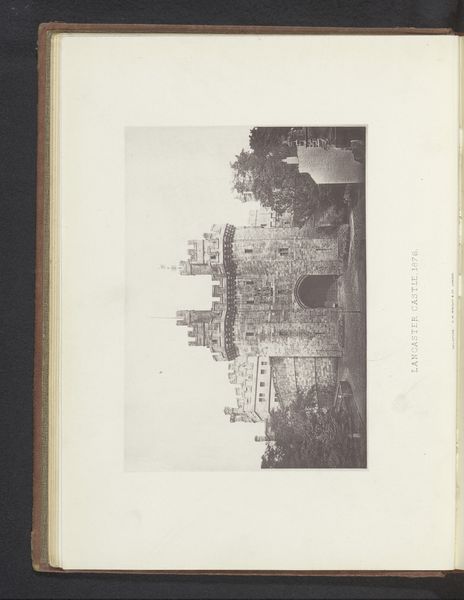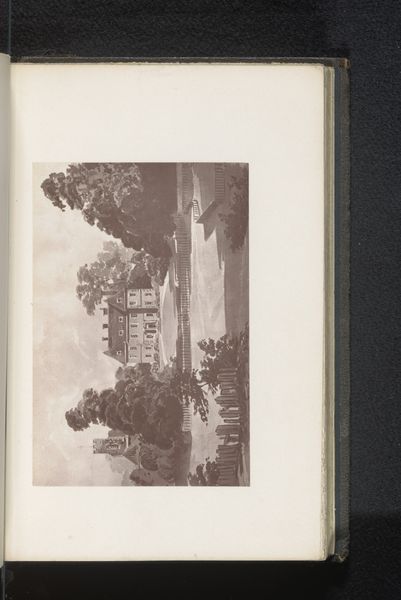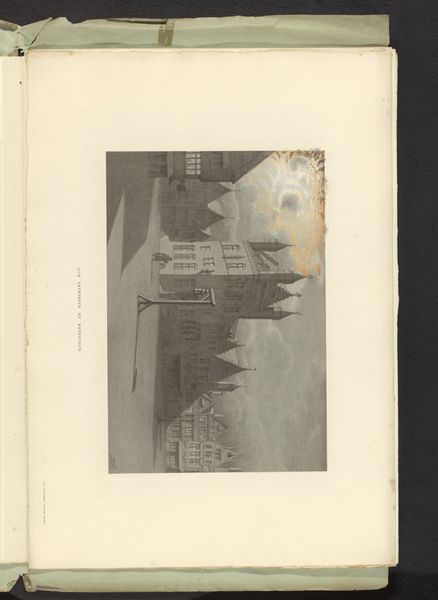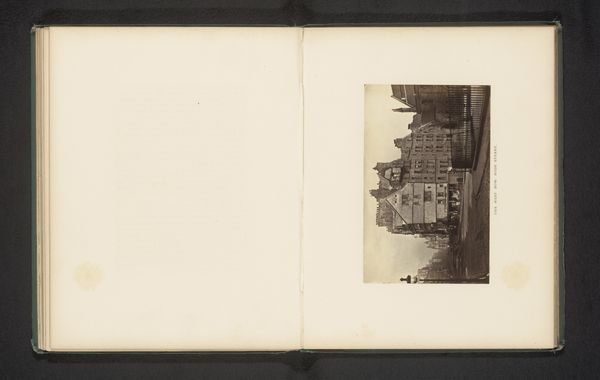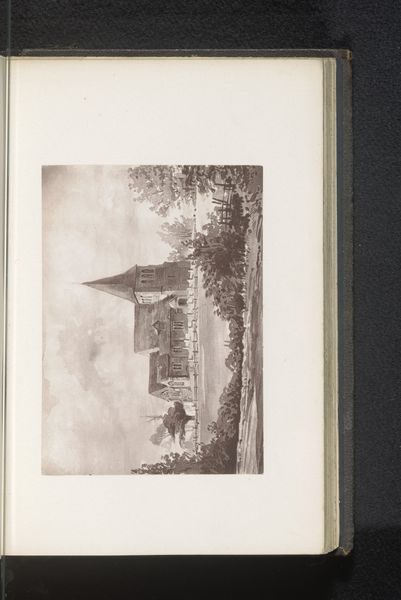
Fotoreproductie van een schildering, voorstellende een gezicht op de pastorie van Hodnet before 1876
0:00
0:00
drawing, paper
#
drawing
#
landscape
#
paper
#
realism
#
building
Dimensions: height 80 mm, width 117 mm
Copyright: Rijks Museum: Open Domain
Editor: So, this is "Fotoreproductie van een schildering, voorstellende een gezicht op de pastorie van Hodnet," a drawing on paper from before 1876 by an anonymous artist. It has a calm, peaceful mood to it. How do you interpret this work? Curator: Well, given its depiction of a parsonage, we might consider its potential commentary on the role of the church within 19th-century society and community structures. The apparent realism of the work invites the viewer to see a specific place, and possibly a specific moment in time. Who do you think this imagery was made *for*? And, given that it's a reproduction of a painting, what’s the significance of *that* remove? Editor: Maybe for people who lived there or were connected to the church? I guess the reproduction suggests that access to the original painting was limited, maybe hinting at class distinctions. Curator: Precisely! Think about the power dynamics at play in representing such a scene. Does the artist’s anonymity complicate this further, perhaps removing an element of personal authority? And in that case, what assumptions can be made about the gender or class of the artist? Editor: That's a good point. I hadn't considered that the artist being unknown actually adds another layer of meaning to the image, suggesting a lack of privilege or access to the art world. Curator: Yes, anonymity is telling here. Now consider the stylistic choice of landscape realism at this time. The history of art and photography show a lot of women employing landscape techniques to subvert a largely male discourse about what "matters" in representation. How does understanding this image as “realist” challenge the other options that artists had for depicting reality? Editor: I'm starting to see it not just as a pretty picture of a building, but as a document reflecting societal power structures and artistic choices that might have even been pushing back against the status quo. Curator: Exactly. It pushes us to think critically about the intersection of art, representation, and the prevailing social norms of the time. Editor: Thanks, I learned a lot from that. It's amazing how much you can unpack from one simple image.
Comments
No comments
Be the first to comment and join the conversation on the ultimate creative platform.
